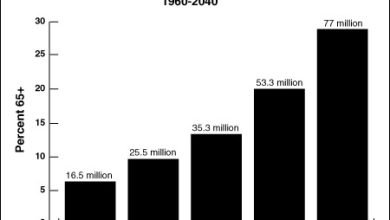Social Security Benefits: How To Maximize Your Benefits

By Linda Stern
WASHINGTON, Oct 31 (Reuters) – It is no surprise that as the baby boom approaches its Social Security years, it is turning the decision about when to start collecting benefits from an automatic move into a major planning and research opportunity.
Having intensively looked into car seats and college admissions for their kids and tried to map out careers and 401(k) plans, boomers now will focus attention on squeezing Social Security for all it is worth.
“Baby boomers are the first generation that isn’t going to put up with crappy advice,” says William Meyer, chief executive officer of Social Security Solutions Inc, one of a number of new companies selling Social Security strategic planning to future recipients. “They are the generation that demands more.”
Meyers and his business partner, William Reichenstein, a chartered financial analyst and Baylor University professor, have spent several years writing technical papers for financial advisers about how their clients can optimize retirement benefits.
There are a numbers of reasons why Social Security optimization is a new trend. The retirement program’s rules are complex, allowing for a variety of claiming strategies. The boomer generation is the first to have dual-income households for most of its working years, so spouses have more options for coordinating benefits. Members are being told to delay drawing on them as long as possible, even while many people are being forced into early retirement. And the Internet’s ability to present sophisticated analytics and optimizing algorithms makes these strategies a numbers game for anyone who wants to play.
Companies like Meyer’s have jumped into that space. Other competitive sites include MaximizeMySocialSecurity.com — started by another longtime retirement analyst, Laurence Kotlikoff of Boston University — and SocialSecurityChoices.com, founded by partners including Jeffrey B. Miller, an economist who has worked at the Social Security Administration. These companies all charge nominal amounts, between $20 and $40, to do a computerized analysis that will tell consumers what their best strategy is. AARP also has a free version on its website.
They are all different, but they all point to the same conclusion: If you optimize your Social Security strategy you can save tens or even hundreds of thousands of dollars over your retirement lifetime. Here’s how to approach that exercise:
— Know the basic strategies. The longer you delay collecting Social Security (up until age 70) the bigger your monthly benefit will be. Married couples can tag-team, with one spouse claiming “spousal” benefits (equal to half the monthly check the other spouse would get) to delay his or her own benefit until it reaches its maximum, and then switching. Divorced couples who were married for at least 10 years can double down; each spouse is allowed to claim the other’s benefits for a few years before switching to the bigger benefit. Single people who delay benefits until age 70 can maximize their checks for the rest of their lives; it is a way to provide some longevity protection without buying an insurance policy.
— Pay for the advice. The way Social Security benefits are calculated is nuanced, so it pays to get someone to do the math for you. Check these services to see which you like best. Not all cover all situations, such as divorce. You may find one easier to use or clearer. You could get reports from all four of the services mentioned here for under $100. That’s a small amount to pay if it will save you even a fraction of what they claim.
— Life expectancy matters. The optimal strategy for a couple changes based on how long they will live. In one example, Social Security Choices says the 59-year-old wife and 61-year-old husband should coordinate their benefits jointly, with her starting them at 64, him claiming spousal benefits until he turns 70 and then taking his benefit — IF they expect average life expectancies of 82 (him) and 86 (her). That will be worth 10 percent more, or roughly $76,000 in today’s dollars, than if they both start claiming benefits at 62.
But if that same couple expects to live longer than expected – the husband to 88 and the wife to 92, then they should wait until she is 66 to claim spousal benefits, and both partners should defer their own benefit start date until she is 69 and he is 70. That would earn them almost 15 percent in additional benefits, or $137,000 in today’s dollars.
What should you do if you don’t know how long you will live? Unless you have enough medical conditions and family history to bet on a shorter life span, take the risk and prepare to live longer than expected. That’s the most efficient longevity protection you can get.
— Other assets matter. It’s all well and fine for some calculator to tell you to optimize Social Security by not filing for it until you are 70. But how will you support yourself between 62 and 70 if you’re no longer working? The benefits of delaying coverage are so significant that pulling money out of your personal accounts to cover those years could be the best answer, says Miller.
— Taxes matter too. If you have to withdraw all of your living expenses from a tax-deferred retirement account, that throws one more wrench into your plan, because you’ll have to pay income tax on your withdrawal.
It’s best, if you’re delaying Social Security benefits, to have a Roth IRA, taxable accounts and a health savings account to draw from. For an extra but undisclosed fee, Social Security Solutions will help optimize all of your withdrawals.
(Linda Stern is a Reuters columnist. The opinions expressed are her own. The Stern Advice column appears weekly, and at additional times as warranted. Read more of her work at blogs.reuters.com/linda-stern.)



